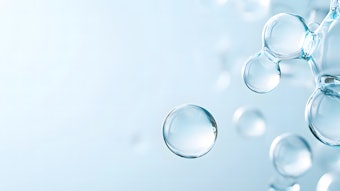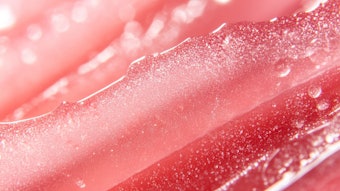
Skin care products are becoming more complex and effective every day. New and advanced ingredients are becoming available more rapidly to cosmetic chemists with higher levels of efficacy and, of course, side effects. Skin care professionals need to be able to understand how to read product ingredient labels and provide answers to their clients regarding what the ingredients are, what dose is in the product, what role the ingredients play and what contraindications should be warranted.
There are basic rules that product manufacturers must comply with in order to list ingredients on their products.
- Standardized names. Ingredient names must comply with the International Nomenclature for Cosmetic Ingredients (INCI) format. The ingredient names are standardized in this format so that all products can be compared to each other easily and for safety reasons.
- Descending order. Ingredients must be listed in descending order of concentration to 1%. Ingredients below 1% can be listed in any order
Now that the rules are understood, let’s find out how skin care ingredients are used in formulated skin care products. There are a few broad classes of skin care products that will be covered in this article: cleansers, lotion/creams and serums.
Cleansers
Generally, cleansers are a blend of surfactants that help eliminate oil, dirt and makeup from the skin. Cleanser formulas may also contain foam boosters to increase the levels and density of foam, and to stabilize the foam; skin conditioners to make the skin less tight-feeling after washing; waxes—high molecular weight alcohols; preservatives; fragrances; and dyes.
Cleanser realities
1. The most effective cleansers as defined in this article are products that are clear and see-through if you hold them up to light. Cleansers that are cloudy or pearlescent usually contain ingredients such as cetyl alcohol or stearates that tend to deposit on skin while cleansing and can form an occlusive layer on the skin. This occlusion can block other ingredients from penetrating the skin’s surface, which may render them ineffective.
2. There is a difference between sodium laureth sulfate and sodium lauryl sulfate. Sodium lauryl sulfate can be very drying and irritating while sodium laureth sulfate is gentler to skin.
3. Non-sulfate products tend to be gentler to the skin, but often do not cleanse as well, so makeup is not completely removed in many instances
Cleanser myths
1. Parabens are unsafe. This is completely untrue as stated and restated by the U.S. Food and Drug Administration (FDA). Although they are safe, many manufacturers now formulate products without parabens because of this consumer misconception.
2. Sulfates are unsafe. This is a similar case to parabens—very often, sulfates are confused with sulfites, which are not the same.
Lotions & Creams
There are many different formulation types for lotions and creams. The most common is an oil-in-water emulsion. Simply put, there are oil-soluble ingredients and water-soluble ingredients in most lotions and creams. Usually, the oil-soluble ingredients are in lower concentrations than the water-soluble ingredients. It is well-known that if oil and water are combined, they separate, so ingredients have to be added to stabilize the oil and water ingredients together; these are called emulsifiers.
An easy way to understand this is to examine a common emulsion—mayonnaise. Basic mayonnaise is made with vegetable oil, water and egg. What’s the emulsifier that keeps the oil and water together in a nice, white, thick emulsion? The lecithin from the egg.
This is the basic ingredient understanding of most lotions and creams on the market. There are basic classes of ingredients in most lotions and creams—water, moisturizers (occlusive and humectant), thickeners, esters (lubricity), oil-soluble ingredients, preservatives, chemical antioxidants and stabilizers. Let’s look at an ingredient list for a lotion/cream.
Water is the highest concentration ingredient, which is
typical in water-in-oil emulsions. The moisturization typically comes from a blend of occlusive and humectant moisturizers. In this example, dimethicone and petrolatum are the occlusive moisturizers, while glycerin is the humectant moisturizer. An occlusive moisturizer provides a barrier to the skin to trap moisture from leaving the skin. A humectant moisturizer attracts moisture to the skin and binds it into the stratum corneum.
As previously discussed, emulsifiers are important to keep emulsion formulas stable. One way to spot emulsifiers in skin care formulas is to look for an ingredient with a hyphen and a number attached to it. For instance, ceteth-20 and steareth-21 are both emulsifiers in the above formula. Cosmetic chemists have to be careful in choosing the correct emulsifiers with the correct concentration. If the emulsifiers are present at a concentration that is too high, then skin irritation will result; too low and the formula will separate.
In the formula above, phenoxyethanol, caprylyl glycol and potassium sorbate are all contributing to the preservative system of the formula.
You will be able to identify most thickeners through root words, such as “carbomer,” “crosspolymer,” “polyacrylamide” and “gum.”
Water, cyclopentasiloxane, dimethicone crosspolymer, dimethicone, laureth-23, laureth-4, petrolatum, dimethicone, ceteth-10, steareth-21, polaxmer 335, glycerin, polyacrylamide/C13-14 isoparaffin/laureth-7, bisabolol, phenoxyethanol, caprylyl glycol,potassium sorbate, hexelyene glycol, fragrance
Lotion & cream realities
1. Perception is reality in lotion and cream formulations. Above all, the product must smell and feel good. A good cosmetic chemist will be able to formulate a product that functions properly, as well as has very good aesthetic features. If clients do not like the feel or smell of a product, they will not be compliant with its usage.
2. No matter the function of the lotion or cream (hydrating, anti-aging, acne, etc.), it is important to look for the occlusive/humectant moisturization blend of ingredients near the top of the ingredient list. Remember that the formula ingredients work best and most efficiently in skin if they are in the presence of water.
Lotion & cream myths
1. Did you ever have the client who had chronically dry skin, and no matter what you did, the skin stayed dry? There are two potential reasons for this. The first is that her barrier function had been impaired and transepidermal water loss remained high. Barrier repair active ingredients need to be applied to improve the lipids in the skin. The second is a perception issue. Clients, particularly women 40 and older, tend to have less sebum on their skin and it will feel dry. However, what is happening is that their skin is more rigid and less supple because of an absence of oil, which lubricates it. More moisturizing ingredients won’t help this client. Only by including sebum supplements, such as specific esters (capric/caprylic triglyceride) in the formulas, will skin become lubricated and relaxed so it feels more hydrated.
2. Thicker does not mean better. Consumers are trained to think that the thicker the lotion/cream, the more effective it will be. Not true. Often, a night and a day cream is recommended in a skin care regimen. Look at the list of ingredients; many times they are very similar, except for the viscosity, or thickness of the product. Use your professional judgment by reading and understanding the ingredient listing to help decide whether a product is needed by your clients.
3. There are tricks used that can fool you when reading an ingredient list. One of the most common is the use of aloe, aloe concentrates and aloe gels. It is important to know when assessing how much aloe is in a formula whether it is being reported on a label as a solid. Some manufacturers report aloe gel as the first ingredient because they use an aloe gel in high concentrations, but the actual aloe content is much lower. If you have questions, call the supplier and ask how much aloe solid is in the formula.
Serums
Generally, serums are used to deliver active ingredients to skin in higher concentrations in order to generate a specific skin response. Typical serums address skin-specific issues, such as hyperpigmentation, lines and wrinkles, sagging skin, texture, tone, pore size, acne, redness and irritation.
Understanding ingredient listings in serums is often difficult. Active ingredient names can take the form of Latin names for botanically sourced compounds, and more generic INCI names may be used, such as yeast extract, which can mean a multitude of biologically active ingredients. Quite long chemical names are often found.
Understanding the dose of active ingredients is also difficult by trying to interpret ingredient listings. If a particularly active ingredient is very biologically active, it may be dosed in the formula in part-per-million levels and be very low in the ingredient listing, but still be quite effective. Examples of these are epigenetic factors, epidermal growth factors and vascular growth factors.
Serum realities
1. There are more than 16,000 listings in the INCI dictionary. No one can know all the cosmetic ingredients at any given time. If you are unsure what dose and what active ingredient is in particular serum, request that the manufacturer supply that detailed information.
2. Watch out for serum claims and their target biology. For example, if you have a serum that claims it can improve collagen and elastin by stimulating skin, the ingredient would need to penetrate to the dermal tissue. If you need to lighten skin, ingredients must penetrate no more than to the epidermal-dermal junction, where color-producing cells exist. If you want to exfoliate, the serum should not penetrate far below the stratum corneum.
Serum myths
1. Serums will improve the skin immediately. There are ingredients that can artificially tighten skin and temporarily reduce fine lines; these include specific types of seaweed extracts and oligosaccharides. Essentially, as they lose water through evaporation once applied to the skin, the molecule that is left contracts and tightens the skin. This is fine if that is what is claimed, but for true skin improvement, serums take between 30–90 days to start showing signs of real progress.
2. Watch out for product occlusion from lotions and cleansers. If the skin is occluded, active serums will not penetrate to their intended target, causing them to not work, resulting in a frustrated client.
Take the extra step
See Decoding Label Lingo to help interpret some of the ingredients in products you use or want to compare. This is a very general list, but it can help guide you into the next phase of ingredient understanding for you and your clients.
For true skin improvement, serums take between 30–90 days to start showing signs of real progress.
By learning what labels really mean, you can pass this information on to your clients, educating them about what products will really work for their needs. Taking this extra step will solidify your reputation as a true skin care resource, and will bring more credibility to your service results and retail recommendations.











